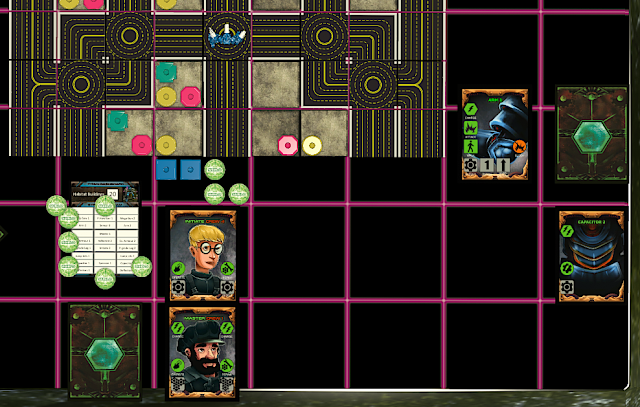Capacitors have a troubled history in Titanomachina, as they started from the original notion in Adeptus Titanicus of a Titan have a vulnerable reactor that could be attacked as a kind of one-shot-one-kill way of killing a Titan. I didn't find that mode of play particularly enthralling and so I tried a number of other things including having them draw extra cards to the current 'reactivate the last activated system' While that last thing has worked, per se, it's seriously counter-intuitive and leads to all sorts of weird interactions with the other rules including (and especially) a problem with Operate action whereby a crew-system adds their effect score to the effect score of the next system activated, leading to a nasty edge-case in which such an interaction is simply prohibited (since it would cause an infinite loop).
Lately, however, I've been considering reverting to the notion of Full Power being an action that allows players to draw cards. At a current Charge/Effect of 2/1 that's not simply a bad idea, it's a bad move on the part of the player to ever use it. Even where we reduce the Charge to 0 you're still giving up one card for another. Now that does have a certain positive effect, especially where you start adding Operate actions before it. That's still extremely pillow-fisted compared to anything else though, as you're essentially trading in cards on a 1:1 (until the Master Crew). It's not great.
What's not great about it, however, is that it does very little on its own. At Charge/Effect 0/2 suddenly you're giving up one card for two cards. That has some serious possibilities, as it means that where you have a Charge 2 card and a Capacitor left in your hand you can trade in the Capacitor for enough power to charge that Charge 2 card and use it. That a capacitor gives you more power to play with when you discharge it is, to some degree or other, thematically appropriate. Those two cards could also contain a Charge 1 card that can deliver some desired effect, so between providing extra power and extra options, it goes some distance to making up for depriving a Titan of repeating an activation. The simple act of accelerating the player's Titan deck one card ahead could be incredibly useful in some highly specific situations.
There is also the way this dovetails nicely with the Emergency Power reaction (action played in response to an attack) where instead of re-activating a card with the block or intercept action, it allows a player to draw a card from the top of their deck and play it to block or intercept an attack. There's something of a question about what happens when the card cannot be used to block or intercept, with the default assumption of mine being that the players just put the card in their hand.
So rather than a kind of replay card, the Capacitor would increase a player's options and the resources to play those options. I think this is the sort of thing I need to play-test first so it's not going into 'production' on Tabletop Simulator at least until January. But it's certainly an idea that I had.
I should note that this came to my mind after once again receiving a comment about how weird it was that Titans could not kick directly forward. I mean, they can after activating a sponson or a turret, but there are still people that find it weird. There's the possibility of moving the legs to the front of the Titan dashboards, but again the thing is that if you're hitting a Titan directly down the middle you're not attacking their legs. Certainly I think it's more about managing expectations, particularly for those who are used to assumptions like those made in games of BattleTech and similar. But it was the notion then of whether to re-orient the dashboards or add Twist to non-sponson/turret systems or some similar fix when it occurred to me that the real problem with turret/sponson systems was that they occur between 1-3 every four rounds with three being not-quite overkill and one being barely enough. Hence the train of thought returning to an earlier version of capacitors and the consideration of reverting in a more successful way. Capacitors will return sponsons and turrets to the player's hand more quickly without needing to add a Twist action to any other systems.
This also gets rid of an annoying edge-case that makes the game more difficult to explain. The real question is: How does that feel?





































